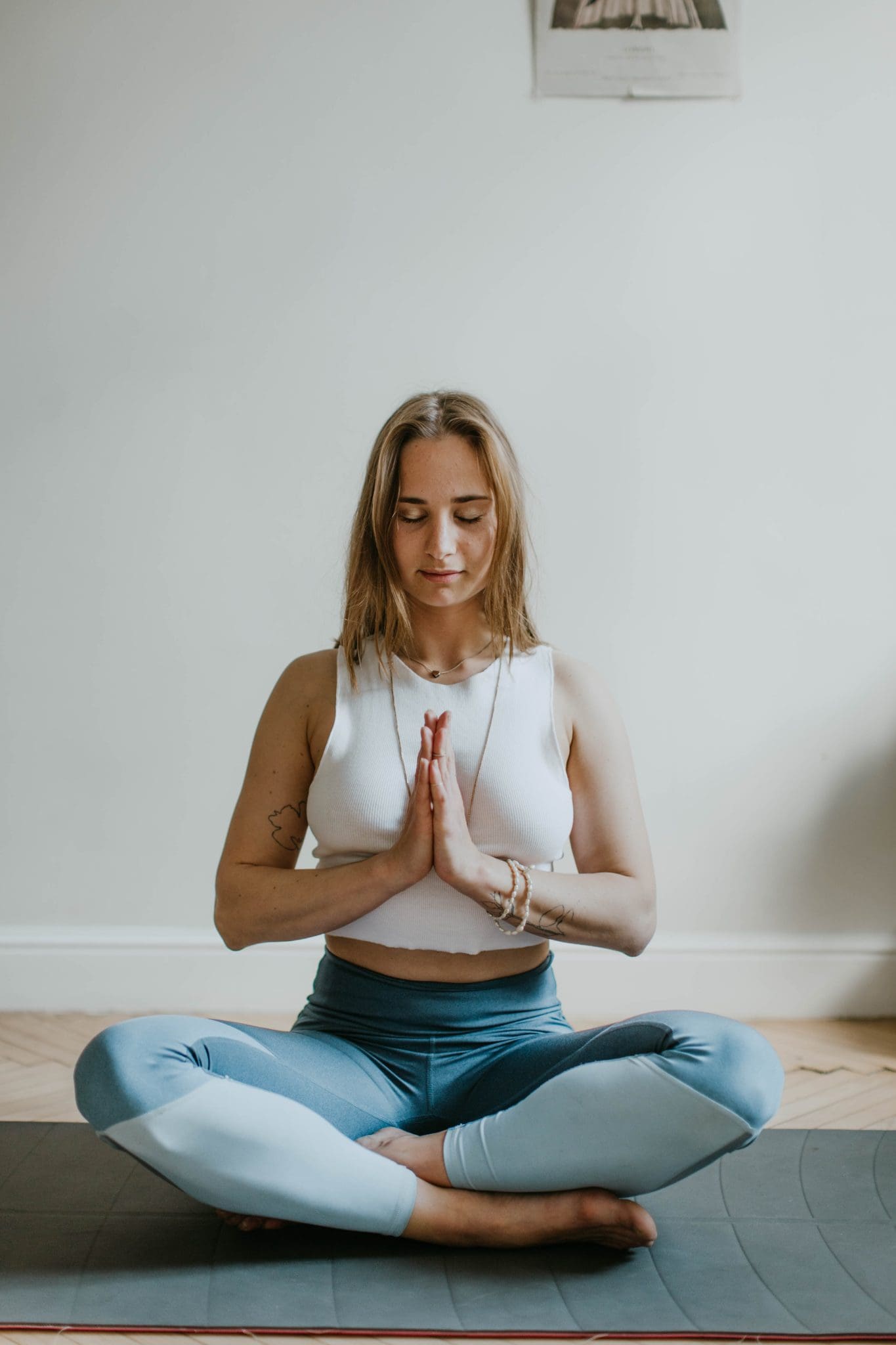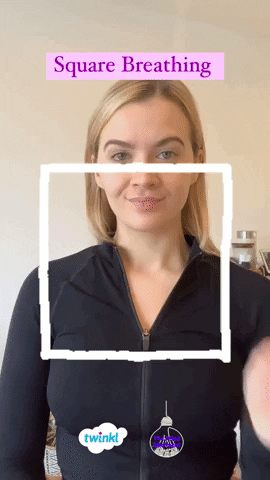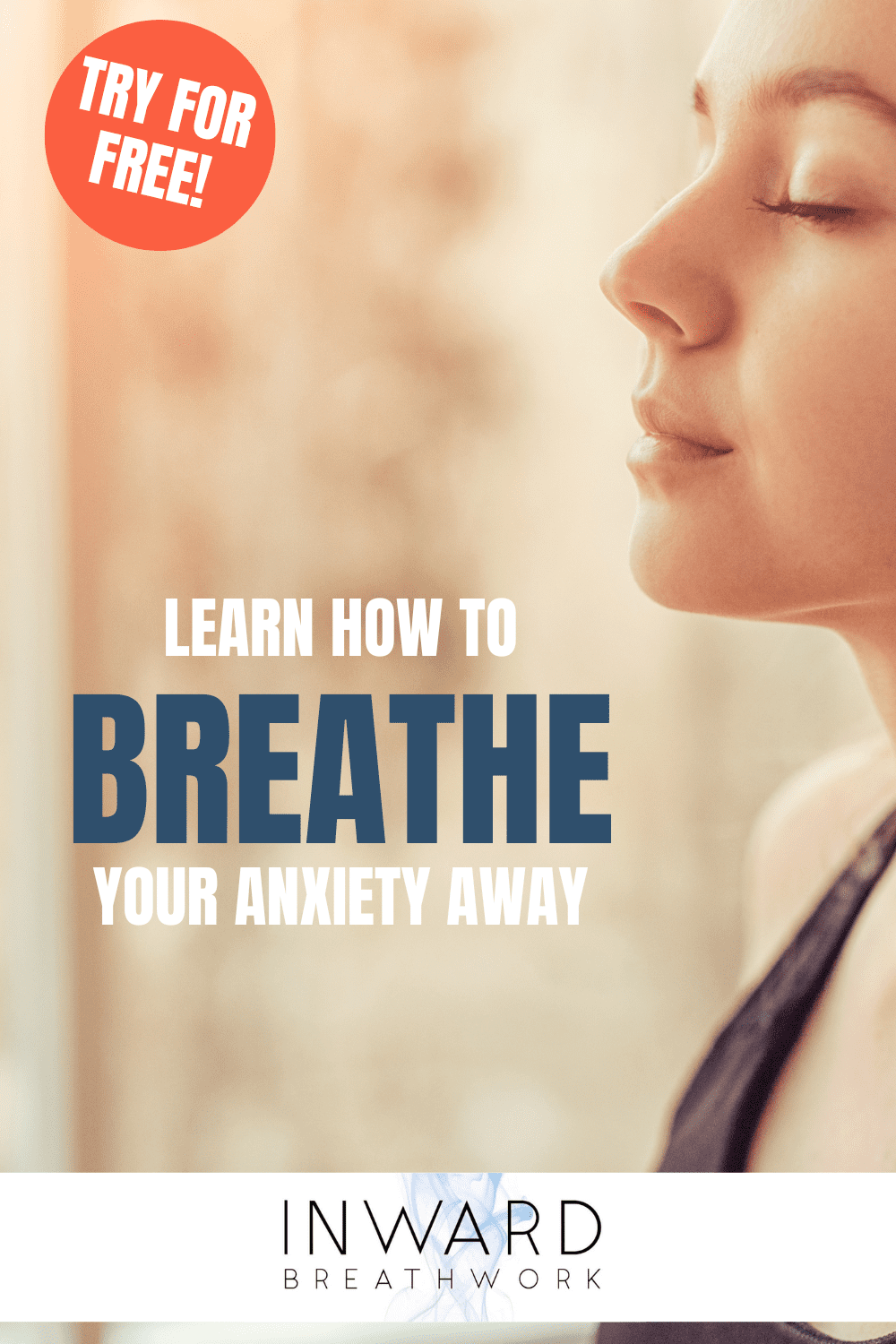Full Disclosure: Clicking on these links could mean a tiny commission for me, at no extra cost to you.
Breathing is essential for life and it’s something we typically do without thinking too much about it. However, bringing attention to your breath can be an effective way to alleviate stress and anxiety and it all comes down to science. When we inhale, our blood cells receive oxygen and release carbon dioxide as a waste product, which is then exhaled from our body. However, improper breathing can disrupt the exchange of oxygen and carbon dioxide, leading to physical and emotional disturbances such as anxiety, panic attacks, and fatigue. That’s also not to forget mentioning that we tend to have shallow breaths when experiencing anxiety, which can make the anxiety symptoms worse. The good news: by practicing anxiety breathing exercises, you can learn to regulate your breath and reduce feelings of stress and anxiety.

Benefits of Deep Breathing
While it’s common for many of us to focus on aspects of our health that can be measured, often through diet and exercise, it’s important not to overlook the impact of stress on our overall well-being. There are many ways to manage your stress and anxiety to improve your health, and breathing exercises are one of the best.
By practicing deep breathing exercises, you can experience an abundance of mental, physical and emotional health benefits, such as:
- Reduced stress and anxiety
- Lower blood pressure
- Improve asthma symptoms
- Help manage symptoms of anxiety and depression
- Reduce headaches caused by tension
- Improve quality of sleep
- Help treat sleep related disorders, such as insomnia
- Relieve symptoms of IBS
- Increase relaxation and calmness
- Relieve pain
- Detoxify the body
- Boost immunity
- Improve digestion and tummy problems
- Boost heart health
Types of Breathing Exercises
With the incredible benefits you can experience with deep breathing, there’s no better time to start than right now. The following breathing exercises are particularly helpful for bringing an instant sense of calm and relaxation to your mind and body. As a result, they are an effective way to manage anxiety symptoms and reduce the frequency and severity of symptoms in the future.
Here are some breathing techniques to try.
1. The Square Breathing Technique

The Square Technique, also known as Box Breathing, is a simple and effective breathing exercise that works well for alleviating stress and anxiety. It’s a great technique for children with anxiety too, as it helps them visualize their breath along with a common shape, making it easy to remember and use in times of stress. By following these easy steps, you can practice this powerful technique whenever you need to bring a sense of calm into your life.
To practice the Square Technique,
- Imagine a square in your mind.
- Using your finger or imagination, begin “drawing” the first line of the square in the air while taking a deep breath in for four seconds.
- Next, draw the second line of the square and hold your breath (without straining) for another four seconds.
- Then, draw the third line, exhale fully until your lungs are empty for a count of four.
- Finally, complete the square by drawing the last line and pausing briefly for four seconds.
Repeat these steps as needed to feel a sense of calm and relaxation.
2. Pursed Lip Breathing Technique
This simple breathing technique makes it easy to slow down your breathing pace and calm your anxiety, just by putting forth deliberate effort in each breath. It’s easy enough to use anytime, anywhere for a dose of calmness and relaxation whenever you need it.
It’s recommended that you practice using this breath 5 times a day so you can get used to the breathing technique.
Here are the steps to practice pursed lip breathing:
- Relax your neck and shoulders.
- Keep your mouth closed and inhale slowly through your nose for 2 counts.
- Pucker or purse your lips as though you were going to whistle.
- Exhale slowly by blowing air through your pursed lips for a count of 4.
3. Belly Breathing Technique
This breathing exercise is as simple as its name suggests: breathing from the belly. To use this deep breathing technique, it’s important to be mindful of each breath and focus on filling your diaphragm with every inhale (instead of raising your chest) and emptying your diaphragm with every exhale.
This type of breathing is especially beneficial for anyone struggling with breathing difficulties caused by chronic obstructive pulmonary disease (COPD), heart issues, or cancer. It can also help alleviate stress and aid in addressing issues related to eating disorders, constipation, high blood pressure, migraines, and many other health conditions.
Here are the steps to using this breathing exercise:
- Slowly inhale through your nose, filling up your diaphragm instead of your chest
- Focus on your breath from the start of your inhale right to the end
- Slowly exhale either through your nose or mouth, paying attention to the feeling, sounds, and sensations of emptying your lungs fully.
- Repeat the process.
4. Lion’s Breath
A common breathing exercise used in yoga, Lion’s Breath helps you release any built-up tension and anxiety in your body, especially in your chest and face. It’s also an excellent way to get a boost of energy and kids love it too.
To do this breathing technique:
- Find a comfortable seated position (use a meditation pillow for added comfort)
- Press your palms on knees with fingers spread wide
- Inhale deeply through the nose while opening eyes wide
- Open mouth wide and stick out tongue as far as it will go
- Exhale with a long “haaa” sound while contracting the throat muscles
- Repeat breath 2 to 3 times
5. Alternate Nostril Breathing

Nadi Shodhana Pranayama, also known as alternate nostril breathing, is a relaxation breathing exercise. Research has found that practicing alternate nostril breathing can improve cardiovascular function and lower heart rate. It can also be great for relieving anxiety and balancing your nervous system.
To practice alternate nostril breathing, it’s important to keep your breathing steady and smooth throughout the exercise.
To do this breathing technique:
- Choose a comfortable seated position
- Lift your right hand toward your nose, pressing your first and middle fingers down into your palm, leaving your other fingers extended.
- Exhale normally, then use your right thumb to gently close your right nostril.
- Inhale through your left nostril
- Then close your left nostril with your right pinky and ring fingers and release your thumb from your right nostril
- Exhale out through your right nostril
- Inhale through your right nostril and then close it
- Release your fingers to open your left nostril and exhale
This is one cycle. Continue this breathing pattern for up to 5 minutes, alternating between your two nostrils (it sounds more complicated than it is). Complete your session with one last final exhale on the left side.
6. Resonant Breathing
Resonant breathing, which is also referred to as coherent breathing, involves breathing for a count of 5 for each inhale and exhale. By practicing this type of breathing exercise, you can alleviate stress and anxiety. It’s also been shown to potentially help reduce symptoms of depression when practiced alongside Iyengar yoga.
To do this:
- Inhale for a count of 5
- Exhale for a count of 5
Continue for a few minutes until you start to feel calmer.
7. Deep Breathing Technique
Deep breathing can alleviate shortness of breath, a common symptom of anxiety, by preventing air from getting trapped in your lungs. It also allows you to get a good, deep breath of fresh air in to promote relaxation and a sense of inner calm.
To use this breathing technique:
- Stand or sit in a comfortable position with your back straight and shoulders relaxed
- Draw your elbows back slightly and straighten your back to allow your chest to expand
- Take a slow and deep breath in through your nose, focusing on filling your lungs with air
- Hold your breath for a count of 5
- Exhale slowly through your nose, feeling your chest and stomach deflate as you release the air
8. 4-7-8 Breathing
The 4-7-8 breathing exercise, known as the relaxing breath, can naturally calm the nervous system. It’s recommended to do the exercise while seated with a straight back, but as you become more comfortable with it, you can try doing it while lying in bed.
- Sit with your back straight
- Place the tip of your tongue against the back of your upper front teeth and keep it there throughout the exercise
- Exhale completely through your mouth, making a “whoosh” sound
- Close your mouth and inhale quietly through your nose to a count of 4
- Hold your breath for a count of 7
- Exhale completely through your mouth, making a whoosh sound to a count of 8
What are you waiting for? Give these effective breathing exercises a try and feel an instant boost of inner calmness, relaxation and anxiety relief. With regular practice, you can perfect the breathing techniques so that they are readily available to you in times of stress and anxiety, or when you want to quickly and easily achieve a renewed sense of peace and clarity.
So, grab your trusty meditation pillow and find a quiet place because it’s time to practice these simple yet powerful breathing exercises! Try these FREE online breathwork sessions and see just how powerful breathing can be for your overall health and wellness.












